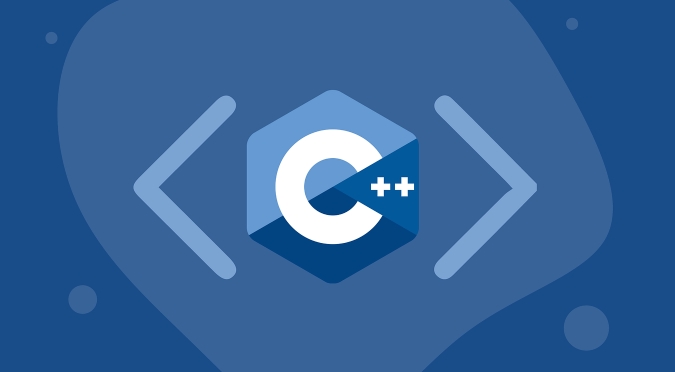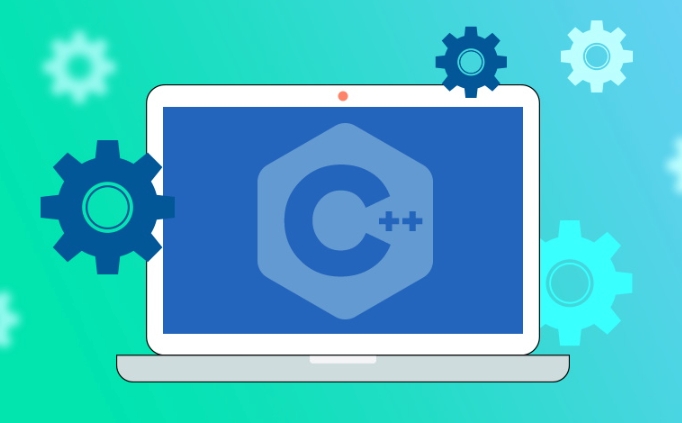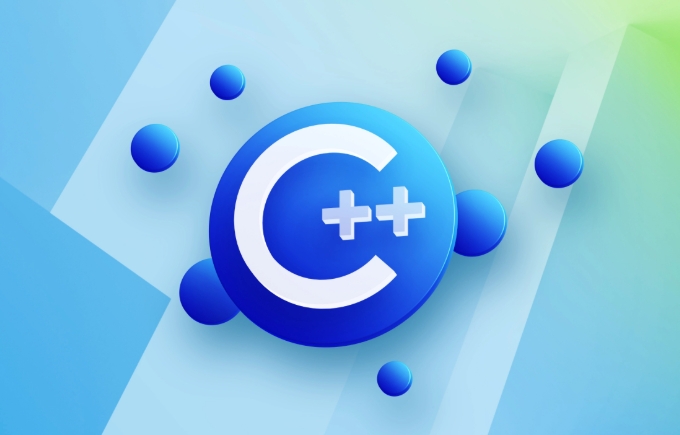CRTP implements static polymorphism through base classes using derived classes as template parameters to avoid virtual function overhead. 1. Used for object counting: Each derived class has an independent static counter, and counts are added or decreased during destruction; 2. Implement static polymorphism: The base class calls the derived class method through static_cast, determines the call target during compilation, and improves performance; 3. Common uses include Mixin function injection, performance optimization, operator generation, EBO utilization, etc., which support zero-cost abstraction and code reuse.

CRTP (Curiously Recurring Template Pattern) is a template programming technique in C. It allows a base class to "know" its derived class type with derived class as template parameters. This pattern implements static polymorphism at compile time to avoid virtual function overhead. It is often used to implement mixin classes, tool classes (such as counting, serialization, comparison operations, etc.) or performance-sensitive scenarios.

Here is a simple CRTP example: implementing a base class that automatically counts object construction and destructuring.
1. Basic usage: Object counter
#include <iostream>
template <typename Derived>
class ObjectCounter {
private:
static int count; // Each derived class has its own count public:
ObjectCounter() {
count;
}
ObjectCounter(const ObjectCounter&) {
count;
}
~ObjectCounter() {
--count;
}
static int get_count() {
return count;
}
};
// Static member definition template <typename Derived>
int ObjectCounter<Derived>::count = 0;
// Use CRTP for specific classes
class Widget : public ObjectCounter<Widget> {
// Widget automatically obtains counting function};
class Gadget : public ObjectCounter<Gadget> {
// Gadget also has independent counts};
int main() {
std::cout << "Widgets: " << Widget::get_count() << "\n"; // 0
std::cout << "Gadgets: " << Gadget::get_count() << "\n"; // 0
{
Widget w1, w2;
Gadget g1;
std::cout << "Widgets: " << Widget::get_count() << "\n"; // 2
std::cout << "Gadgets: " << Gadget::get_count() << "\n"; // 1
}
std::cout << "After scope:\n";
std::cout << "Widgets: " << Widget::get_count() << "\n"; // 0
std::cout << "Gadgets: " << Gadget::get_count() << "\n"; // 0
return 0;
}2. Implement static polymorphism (replace virtual functions)
CRTP can be used to implement "static polymorphism", that is, to decide which function to call at compile time to avoid runtime overhead.

template <typename Derived>
class Shape {
public:
void draw() {
// Cast to a derived class and call the specific implementation static_cast<Derived*>(this)->draw();
}
};
class Circle : public Shape<Circle> {
public:
void draw() {
std::cout << "Drawing a circle.\n";
}
};
class Rectangle : public Shape<Rectangle> {
public:
void draw() {
std::cout << "Drawing a rectangle.\n";
}
};
void render(Shape<Circle>& circle) {
circle.draw(); // Call Circle::draw()
}
int main() {
Circle c;
Rectangle r;
c.draw(); // Drawing a circle.
r.draw(); // Drawing a rectangle.
return 0;
}Note: This method of calling is not polymorphic (cannot point to different subclasses with
Shape*), but it has high performance and is suitable for template context.
3. Summary of common uses
CRTP is commonly used for:

- Mixin mode : Add common functions to derived classes (such as counting, logging, cloning)
- Performance optimization : replace virtual function tables to implement compile-time binding
- Interface enhancement : Automatically generate operators or methods for derived classes
- EBO (Empty Base Optimization) utilizes : zero overhead abstraction
For example, it can also be implemented using CRTP:
- Automatically generate
==and!=(as long as) - Object registration mechanism
- Singleton template
- Access control or permission checking
Basically that's it. The key to CRTP is "the base class knows who inherits it", and calls derived class methods through static_cast<derived>(this)</derived> , to achieve powerful code reuse and zero-cost abstraction. Although the name is "strange", it is very practical to use.
The above is the detailed content of C CRTP (Curiously Recurring Template Pattern) example. For more information, please follow other related articles on the PHP Chinese website!

Hot AI Tools

Undress AI Tool
Undress images for free

Undresser.AI Undress
AI-powered app for creating realistic nude photos

AI Clothes Remover
Online AI tool for removing clothes from photos.

Clothoff.io
AI clothes remover

Video Face Swap
Swap faces in any video effortlessly with our completely free AI face swap tool!

Hot Article

Hot Tools

Notepad++7.3.1
Easy-to-use and free code editor

SublimeText3 Chinese version
Chinese version, very easy to use

Zend Studio 13.0.1
Powerful PHP integrated development environment

Dreamweaver CS6
Visual web development tools

SublimeText3 Mac version
God-level code editing software (SublimeText3)
 Using std::chrono in C
Jul 15, 2025 am 01:30 AM
Using std::chrono in C
Jul 15, 2025 am 01:30 AM
std::chrono is used in C to process time, including obtaining the current time, measuring execution time, operation time point and duration, and formatting analysis time. 1. Use std::chrono::system_clock::now() to obtain the current time, which can be converted into a readable string, but the system clock may not be monotonous; 2. Use std::chrono::steady_clock to measure the execution time to ensure monotony, and convert it into milliseconds, seconds and other units through duration_cast; 3. Time point (time_point) and duration (duration) can be interoperable, but attention should be paid to unit compatibility and clock epoch (epoch)
 How to get a stack trace in C ?
Jul 07, 2025 am 01:41 AM
How to get a stack trace in C ?
Jul 07, 2025 am 01:41 AM
There are mainly the following methods to obtain stack traces in C: 1. Use backtrace and backtrace_symbols functions on Linux platform. By including obtaining the call stack and printing symbol information, the -rdynamic parameter needs to be added when compiling; 2. Use CaptureStackBackTrace function on Windows platform, and you need to link DbgHelp.lib and rely on PDB file to parse the function name; 3. Use third-party libraries such as GoogleBreakpad or Boost.Stacktrace to cross-platform and simplify stack capture operations; 4. In exception handling, combine the above methods to automatically output stack information in catch blocks
 What is a POD (Plain Old Data) type in C ?
Jul 12, 2025 am 02:15 AM
What is a POD (Plain Old Data) type in C ?
Jul 12, 2025 am 02:15 AM
In C, the POD (PlainOldData) type refers to a type with a simple structure and compatible with C language data processing. It needs to meet two conditions: it has ordinary copy semantics, which can be copied by memcpy; it has a standard layout and the memory structure is predictable. Specific requirements include: all non-static members are public, no user-defined constructors or destructors, no virtual functions or base classes, and all non-static members themselves are PODs. For example structPoint{intx;inty;} is POD. Its uses include binary I/O, C interoperability, performance optimization, etc. You can check whether the type is POD through std::is_pod, but it is recommended to use std::is_trivia after C 11.
 How to call Python from C ?
Jul 08, 2025 am 12:40 AM
How to call Python from C ?
Jul 08, 2025 am 12:40 AM
To call Python code in C, you must first initialize the interpreter, and then you can achieve interaction by executing strings, files, or calling specific functions. 1. Initialize the interpreter with Py_Initialize() and close it with Py_Finalize(); 2. Execute string code or PyRun_SimpleFile with PyRun_SimpleFile; 3. Import modules through PyImport_ImportModule, get the function through PyObject_GetAttrString, construct parameters of Py_BuildValue, call the function and process return
 What is function hiding in C ?
Jul 05, 2025 am 01:44 AM
What is function hiding in C ?
Jul 05, 2025 am 01:44 AM
FunctionhidinginC occurswhenaderivedclassdefinesafunctionwiththesamenameasabaseclassfunction,makingthebaseversioninaccessiblethroughthederivedclass.Thishappenswhenthebasefunctionisn’tvirtualorsignaturesdon’tmatchforoverriding,andnousingdeclarationis
 How to pass a function as a parameter in C ?
Jul 12, 2025 am 01:34 AM
How to pass a function as a parameter in C ?
Jul 12, 2025 am 01:34 AM
In C, there are three main ways to pass functions as parameters: using function pointers, std::function and Lambda expressions, and template generics. 1. Function pointers are the most basic method, suitable for simple scenarios or C interface compatible, but poor readability; 2. Std::function combined with Lambda expressions is a recommended method in modern C, supporting a variety of callable objects and being type-safe; 3. Template generic methods are the most flexible, suitable for library code or general logic, but may increase the compilation time and code volume. Lambdas that capture the context must be passed through std::function or template and cannot be converted directly into function pointers.
 What is a null pointer in C ?
Jul 09, 2025 am 02:38 AM
What is a null pointer in C ?
Jul 09, 2025 am 02:38 AM
AnullpointerinC isaspecialvalueindicatingthatapointerdoesnotpointtoanyvalidmemorylocation,anditisusedtosafelymanageandcheckpointersbeforedereferencing.1.BeforeC 11,0orNULLwasused,butnownullptrispreferredforclarityandtypesafety.2.Usingnullpointershe
 How does std::move work in C ?
Jul 07, 2025 am 01:27 AM
How does std::move work in C ?
Jul 07, 2025 am 01:27 AM
std::move does not actually move anything, it just converts the object to an rvalue reference, telling the compiler that the object can be used for a move operation. For example, when string assignment, if the class supports moving semantics, the target object can take over the source object resource without copying. Should be used in scenarios where resources need to be transferred and performance-sensitive, such as returning local objects, inserting containers, or exchanging ownership. However, it should not be abused, because it will degenerate into a copy without a moving structure, and the original object status is not specified after the movement. Appropriate use when passing or returning an object can avoid unnecessary copies, but if the function returns a local variable, RVO optimization may already occur, adding std::move may affect the optimization. Prone to errors include misuse on objects that still need to be used, unnecessary movements, and non-movable types






